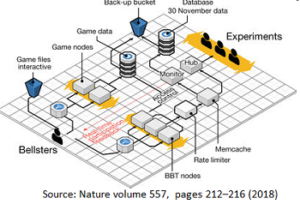
Effect contested by Einstein is proven
The phantasmagoric effect at a distance, which is the fact that particles can relate  to distance and the effect of being “felt” by the other distance, is definitely proven in an experiment published by Nature on May 9.
to distance and the effect of being “felt” by the other distance, is definitely proven in an experiment published by Nature on May 9.
This test is called Bell, due to John S. Bell, was first shown by Alain Aspect who did an optical experiment in 1982, showing this action at a distance. Now the experiment was done recruiting 100,000 human participants to play an online video game that encourages the rapid entry of unpredictable selections and illustrates Bell’s test methodology, participants generated more than 97 million binary choices that were directed through a Web platform Scalable to 12 labs on five continents, where 13 experiments tested local realism using unique atomic photons, atomic clusters and superconducting devices (illustration).
For a period of 12 hours on November 30, 2016, participants around the world provided a sustained data stream of more than 1,000 bits per second for the experiments, using different human-generated data to choose each measurement configuration, correlations strongly contrast local realism and other positions in so-called bipartite and tripartite scenarios.
The results of the project included closing the “freedom of choice” gap (the possibility of scenario choices being influenced by hidden variables to correlate with particle properties), the use of video game methods for the rapid collection of generated randomness and the use of network techniques for global participation in experimental science.
Two data are fantastic from this experiment, proving the phantasmagoric distance action that Einstein contested in an article called EPR, the use of network methodologies in participation in global experimental science, and the use of the video games to simulate data.









